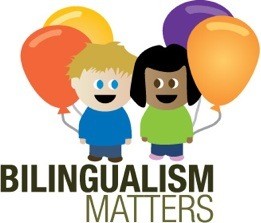Being a Chinese American I was a bilingual infant. My family speaks both Chinese and English. From as far as I can remember I was always able to differential between English and Chinese. I never unconsciously mix up the two languages or confused them with one another. I was always aware of which words are English and which one is in Chinese. I thought this was intrigued by how bilingual children are able to do this.
There is a new study done by Judit Gerain and Janet F. Werker in 2012 that claim 7 month old infants can distinguish different languages with different grammar apart by using prosody cues. Prosody cues which are duration and pitch of spoken words are used to figure out that languages are different.
In learning a new language for adults, the grammar is one of the hardest concepts to comprehend but infants are able to pick it up with ease. More amazingly, bilingual infants may have to learn the grammar of two very different languages with conflicting word order. For example, languages such as English, Italian and Spanish have the word order of the verb before the object while languages such as Japanese, Korean and Turkish have word order of object before the verb. A baby living in a bilingual household do not get confused by the conflicting grammar from the 2 different languages but are able to distinguish one from the other. It is fascinating how the brilliant mind of these infants can separate two languages apart on their own while I, a college student with years of education may have trouble distinguishing languages such as German and Russian apart.
In this study Gerain and Werker believes that infants uses these prosody cues to distinguish different languages. They examined and measured the pitch, tone, frequency and intensity of a variety of different languages and their grammar. They found that there is a difference between the object-verb prosody and verb-object prosody and bilingual infants can use prosody to identify the relevant word order in each of their two languages. They used the head turn preference method where measure the amount of time infants spend looking and listening to the test items. They tested on bilingual and monolingual infants.
The results suggest that bilingual infants who are exposed to object-verb and verb-object languages simultaneously are able to use prosodic information as cues. Their findings also suggest that by 7 months, bilingual infants use of prosody cues to learn languages are already well established. In conclusion, bilingual infants as young as 7 months old are able to distinguish different languages by using prosody cues.
